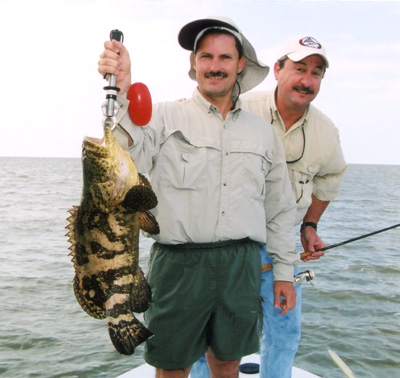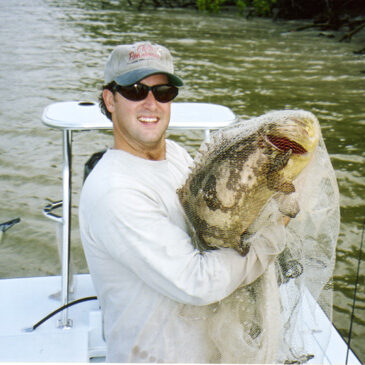
Outdoor Florida Magazine
June 2003
By Capt. Ariel Cabrera
The spread of the net was nowhere near perfection when it hit the water, but the results were substantial. “Do you need help lifting the cast net?” Edward asked as he saw me pulling with all my might. The color on my face said it all – the strain demanded their immediate assistance. Something was shooting from inside the net. Something big. Both Edward and Rick raised their eyebrows when they caught a glimpse of what was inside the heavy load. The loss was teeming with a variety of baitfish, including threadfin herring, silversides, and significant. There was also a jewfish in there, known as a Goliath grouper. It was a double-digit specimen that suddenly perked up this otherwise slow day at Flamingo, Everglades National Park. Up until that moment, I had no idea how useful a small cast net could be.
A few years back, a friend told me that if I was going to guide professionally, I needed to learn how to throw a cast net and know when to use it. I expected this to be a challenge since bait fishing was something I rarely did – I preferred to fish with lures and flies. Throwing a cast net did not come easily to me, and neither did fly casting, but I did what I had to do. I wanted to be able to toss a net-like the pros on TV, so I set out and purchased an economic three-foot net at the neighborhood sporting goods store. This was an excellent net start with, but then I realized that I needed something a little better and a little larger. An eight-foot diameter hand-made Calusa cast net with ¾-inch mesh was the net I chose to use in Everglades backwaters. The Calusa net is made from top-notch materials, the fabric is exceptionally supple, so it opens smoothly every time, and it fits compactly into any compartment in my flats skiff. Plus, the bucket it’s packaged in can be used for many other things.
Although it is not necessary and not the preferred method for purists, finding bait is vital to have a productive day on the water. When it’s overcast or gusting near thirty knots, bait fishing can be the means to discovering fish you wouldn’t be able to see otherwise. Casting a net is a great discovery tool and food chain indicator. Sometimes even an empty net can reveal a vast amount of data about the ecosystem that can help you make the best decisions on your excursion that day. For those folks who have young children, it’s a fun activity take them to a grass bed less than five feet deep, chum a bit, and then make a couple of net tosses. They will never forget the experience, and they’ll learn firsthand not only about fishing for bait but about the importance of the seagrass habitat as well.
I don’t know whether or not the goliath in my net was a telltale sign of their recovery, but I sure know that Edward and Rick are going to trade fishing tools with me on their next charter. They said they’d “take the net for the rod.”


